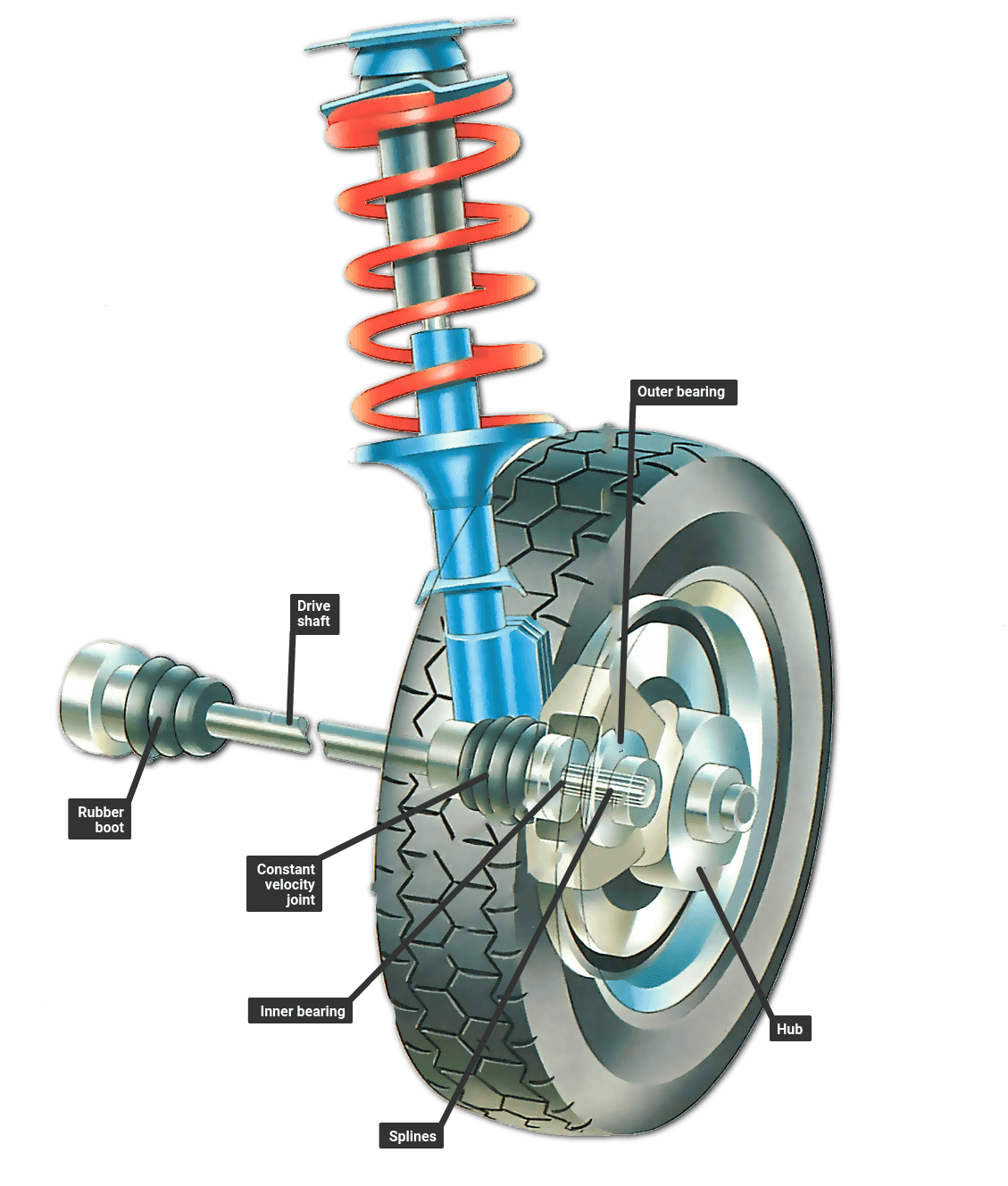Driven wheel hubs
The Video Course teaches you everything about modern cars.

The hubs of the driven wheels often look similar to those of undriven ones, but there are some differences in the way they are constructed because the driven hubs have to incorporate drive shafts too.
In a front-wheel-drive car the hub has two jobs: to drive the wheels, and to swivel so that the car can be steered. To make this possible, the hub rotates in or next to a large casting called a hub carrier. The carrier itself is mounted to the suspension with ball joints that allow it to swivel and move up and down.
In the case of cars with MacPherson struts , the hub carrier has a ball joint at the bottom and is either bolted to or is part of the strut at the top. The upper swivel is then formed by the strut's top mount where it joins the inner wing.
The amount the hub carrier can swivel is controlled by the steering gear , to which it is attached by a steering arm with another joint.
Driving the hub
The hub is driven by a shaft running from the final drive. The shaft has a flexible joint (usually a constant velocity joint) at each end to allow for steering swivel and suspension movement.
The end of the drive shaft runs through the centre of the hub carrier and engages with the rotating part of the hub. When the drive shaft turns, the rotating part of the hub turns with it.
Bearing location
Just as with an undriven wheel, there must be a pair of bearings - an inner and an outer - to hold the hub steady and allow it to rotate smoothly. But while wheel bearings for undriven wheels fit inside the hub and over the stub axle , the bearings for driven wheels usually fit inside the hub carrier and over the hub. The drive shaft then runs through the centre of the hub.
Some cars, notably older BL models, effectively have a rotating stub axle instead - the hub does not extend into the hub carrier. The drive shaft fits tightly inside the bearings that are inside the hub carrier. The hub bolts directly to the end of the drive shaft which sticks through the hub carrier. With this type of design, the shaft takes the load of the wheel as well as driving it.
With both types of design, it is the nut on the end of the drive shaft that holds the hub on to the car. The hub fits from the outside of the hub carrier and the drive shaft runs from the inside to pass through the middle of the hub. A flange on the drive shaft rests up against the back of the inner track of the inner bearing to stop the shaft pulling right through. The nut is always done up tightly and is staked or held by a split pin.
Bearing type
Driven hubs usually have ball bearings rather than the taper roller type found in undriven hubs. In most designs the bearings are quite separate and are normally a press-fit into the hub carrier, although they can be held in by a threaded retaining ring.
Where the bearings are separate, a spacer or tube is fitted between the two inner races to save them from excessive side loads when the central hub nut is tightened. Oil seals are always included to keep dirt out.
Driven rear hubs
Rear-wheel-drive cars with independent suspension usually have rear hubs similar to those on the front of front-wheel-drive cars, except the hub does not have to steer.
Some manufacturers have used unusual features on their driven rear hubs - for instance, the Triumph Herald used a key running in a slot to transmit the drive between the drive shaft and hub, rather than the usual splines.
The Ultimate Car Mechanics video course
Learn everything about modern cars from our new video series.
Learn more >-
We build a Mazda MX5 Miata from scratch
We start by tearing down and then rebuilding the whole car.
-
Every part explained
There's ridiculous detail on every part. Clearly and easily explained.
-
All modeled in 3D
We've created the most detailed 3D model ever produced so we can show you everything working.






